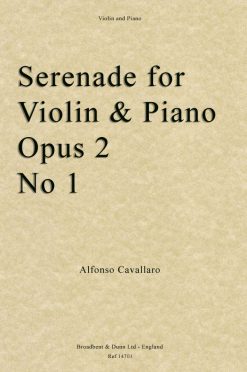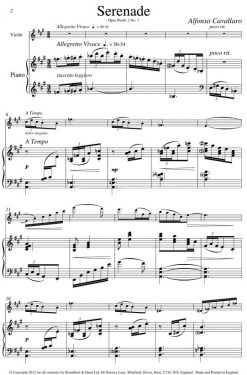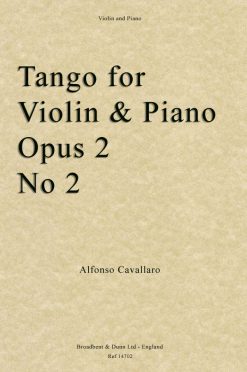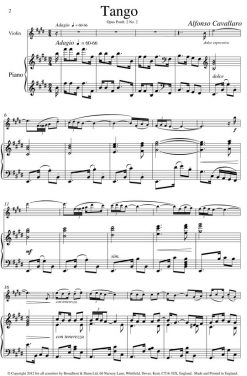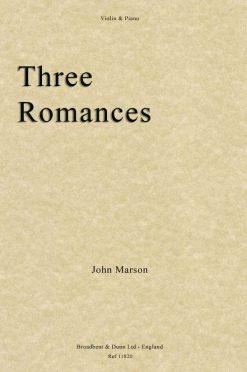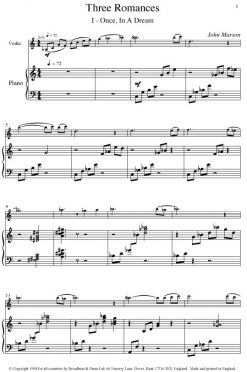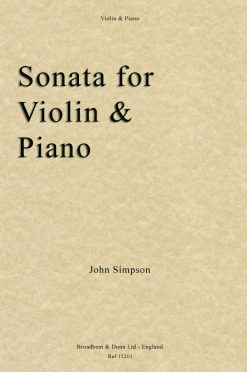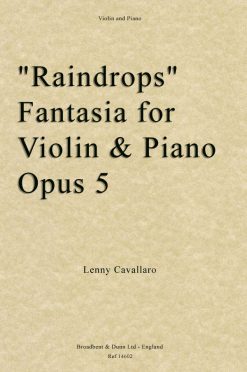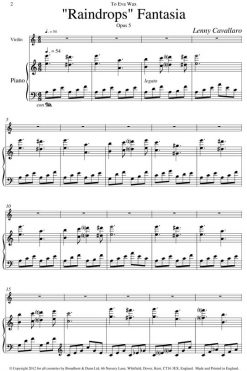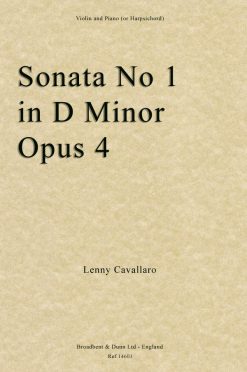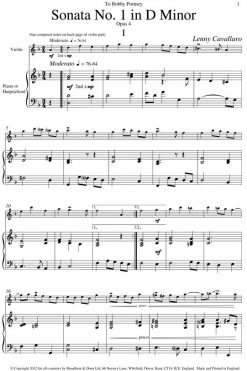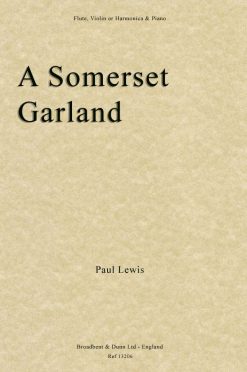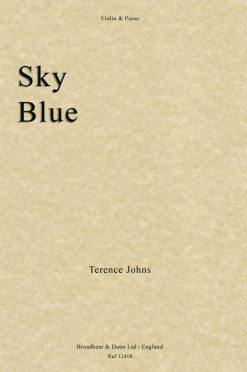Violin & Piano
Alfonso Cavallaro – Serenade for Violin and Piano Opus Posth. 2 No 1 – Digital Download
Violin & Piano
Violin & Piano
Violin & Piano
John Marson – Two Idylls (Violin & Piano) – Digital Download
Violin & Piano
Violin & Piano
Lenny Cavallaro – “Raindrops” Fantasia for Violin and Piano, Opus 5 – Digital Download
Violin & Harpsichord
Lenny Cavallaro – Sonata No. 1 in D Minor for Violin and Piano (or Harpsichord) Opus 4
Violin & Harpsichord
This 2014 publication might well have been composed 300 years earlier, being a truly baroque sonata in four movements (slow-fast-slow-fast). The composer has adhered not only to the harmonic and structural idioms of the time, but also to many of the other "unwritten" conventions. The work invites a great deal of freedom, and even leaves room for some improvisation. In the third movement the violin enters on a long, held note - this pattern recurs throughout, and in some ways appears to echo similar long notes in Bach's B Minor Sonata. The last movement is a set of variations, though neither chaconne nor passacaglia - these are melodic, in the Italian manner, and clearly sound less baroque. The thematic material derives from the opening of Papageno's aria Ein Mädchen oder Weibchen from Mozart's Magic Flute, but transposed from F Major to D Minor. This sonata was premiered at the Lincoln Center by Bobby Portney and has subsequently been recorded by Sarah Darling and can be heard on YouTube: https://www.youtube.com/watch?v=UigLnCPNYSw
Arrangements of Somerset folk songs to give them a new lease of life and introduce them to audiences who might never otherwise hear them. Very popular with audiences, its individual movements are useful as fillers or encores. Martock Jig and Langport March are also playable on Piccolo. It is a very direct and enjoyable work and is also versatile, with versions for flute, violin or harmonica with piano accompaniment. The original harmonica version is very idiomatically written by the composer, who was long associated with the late great virtuoso Tommy Reilly. It is folk material very well suited to the instrument. For teaching studios, conservatories, libraries, amateurs and professionals. The last movement of this work Langport March was a Trinity College London Grade 5 Exam Piece for Flute between 2007 and 2022.
Flute & Piano
Paul Lewis – A Somerset Garland (Flute, Violin or Harmonica & Piano) – Digital Download
Arrangements of Somerset folk songs to give them a new lease of life and introduce them to audiences who might never otherwise hear them. Very popular with audiences, its individual movements are useful as fillers or encores. Martock Jig and Langport March are also playable on Piccolo. It is a very direct and enjoyable work and is also versatile, with versions for flute, violin or harmonica with piano accompaniment. The original harmonica version is very idiomatically written by the composer, who was long associated with the late great virtuoso Tommy Reilly. It is folk material very well suited to the instrument. For teaching studios, conservatories, libraries, amateurs and professionals. The last movement of this work Langport March was a Trinity College London Grade 5 Exam Piece for Flute between 2007 and 2022.
Violin & Piano
Violin & Piano
Terence Johns – Sky Blue (Violin & Piano) – Digital Download

